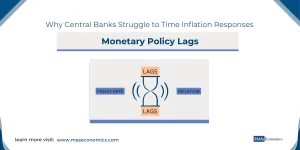Central banks are often seen as institutions that “print money,” but the functions of central banks go far beyond that. In reality, central banks serve as guardians of financial stability, playing crucial roles in economic planning, monetary policy, and ensuring a resilient banking system. The diverse functions of central banks are essential to the health of modern economies, from managing inflation to acting as the lender of last resort. Understanding these roles sheds light on how central banks maintain economic stability and foster growth.
What Is a Central Bank?
A central bank is a public institution responsible for overseeing a country’s monetary policy, issuing currency, and maintaining the financial stability of the economy. Unlike commercial banks, central banks are not profit-driven and are designed to serve the public interest. Some of the most well-known central banks include the Federal Reserve in the United States, the European Central Bank (ECB), and the Bank of England.
The Core Functions of Central Banks
Central banks have several key functions that are vital to the economic health of a nation. Let’s explore these roles in more detail:
Issuer of Currency
The Power of Money Creation
One of the most visible functions of a central bank is its role as the issuer of currency. Central banks are responsible for printing banknotes and minting coins that serve as the primary medium of exchange within the economy. This function ensures there is enough cash circulating in the economy to facilitate trade and transactions.
However, the issuance of currency is only a small part of money creation. Most of the money in modern economies is created through the lending activities of commercial banks, with central banks providing regulation to ensure stability.
Formulation and Implementation of Monetary Policy
Keeping Inflation in Check
Central banks are tasked with formulating and implementing monetary policy to manage inflation and stabilize the economy. Monetary policy involves regulating interest rates and controlling the money supply to achieve economic goals, such as stable prices and sustainable growth.
Interest Rate Adjustments
By setting key interest rates, central banks influence borrowing and spending in the economy. For instance, lowering interest rates makes borrowing cheaper, which stimulates economic activity, whereas raising interest rates can help cool down an overheating economy.
Open Market Operations (OMOs)
Central banks also conduct open market operations, buying or selling government securities to control liquidity in the financial system. Through these measures, central banks can either encourage spending (expansionary policy) or control inflation (contractionary policy).
Banker and Advisor to the Government
Managing Public Debt and Advising on Policy
Central banks serve as bankers to the government, managing the accounts of the central government and facilitating transactions. They play a crucial role in public debt management, helping the government raise funds through the issuance of bonds and other securities.
Additionally, central banks often serve as advisors to governments on economic policy matters. Their expertise in economic trends and financial systems makes them key players in shaping fiscal and monetary policies.
Custodian of Cash Reserves and Foreign Exchange
Managing Reserves and Stabilizing the Currency
Another critical role of the central bank is as the custodian of the country’s reserves, including both cash and foreign exchange reserves. Maintaining a reserve of foreign currencies is essential for stabilizing the exchange rate and supporting international trade.
Central banks use their foreign reserves to intervene in foreign exchange markets, ensuring that the national currency remains stable against other currencies. This is particularly important for countries that rely heavily on imports or exports, as currency fluctuations can have a significant impact on trade balances.
Lender of Last Resort
Ensuring Financial Stability
During times of economic uncertainty or financial panic, central banks act as the lender of last resort. This means that they provide emergency funding to commercial banks that are facing liquidity issues but are otherwise solvent. By doing so, central banks prevent bank runs and maintain confidence in the banking system.
The lender of last resort function became particularly relevant during the 2008 financial crisis when central banks around the world provided liquidity to struggling banks to stabilize the financial system. This role is critical for maintaining financial stability and preventing systemic crises that could disrupt the economy.
Supervisor of the Banking System
Ensuring Sound Banking Practices
Central banks are responsible for supervising and regulating commercial banks and other financial institutions. This involves ensuring that banks maintain adequate capital reserves, follow sound lending practices, and comply with regulatory requirements.
Through their supervisory role, central banks aim to minimize risks within the banking sector and protect depositors. Effective supervision helps prevent reckless banking practices that could lead to financial instability, as seen in the global financial crisis.
Facilitator of Payments and Settlements
Smooth Functioning of Payment Systems
Central banks also play an essential role in ensuring the smooth operation of the payment and settlement systems. They facilitate the transfer of funds between commercial banks, ensuring that transactions are processed securely and efficiently.
A reliable payment system is vital for economic activity, as it underpins all financial transactions, from retail payments to large interbank transfers. Central banks maintain the infrastructure needed for these systems to function, including the interbank settlement systems.
Administration of Exchange Controls
Managing Currency Flows
In some countries, central banks are responsible for the administration of exchange controls. Exchange controls are measures used to regulate the flow of foreign currency in and out of the country, which can be crucial for maintaining currency stability and managing balance of payments issues.
Exchange controls can involve restrictions on currency exchange for certain types of transactions, such as foreign investment or the import and export of goods. These measures are often implemented to protect foreign reserves or prevent capital flight.
Collector and Publisher of Economic Data
Providing Insights for Policy and Decision-Making
Central banks are also responsible for the collection and publication of economic and financial data. This information is vital for policymakers, investors, and analysts who need accurate data to make informed decisions.
Publications like Quarterly Bulletins, Annual Reports, and monthly statistics on money supply, interest rates, and other key economic indicators are made available by central banks. By providing this data, central banks contribute to transparency and informed economic decision-making.
Public Debt Management
Managing Government Borrowing
Central banks help manage the government’s borrowing requirements by acting as the primary agent in the issuance of government securities. This involves managing the auction of government bonds, setting interest rates for these securities, and ensuring a stable demand for government debt.
Effective public debt management is essential to prevent excessive borrowing costs for the government, which can lead to fiscal imbalances. By maintaining investor confidence, central banks help governments meet their funding needs in a sustainable manner.
Why Are Central Banks Important?
Maintaining Economic Stability
The primary goal of a central bank is to maintain economic stability. By controlling inflation, regulating the banking sector, and ensuring a stable currency, central banks create an environment conducive to sustainable economic growth. When central banks perform their functions effectively, they help to reduce economic volatility, enabling businesses and consumers to make informed financial decisions with greater confidence.
Supporting Employment and Growth
By implementing appropriate monetary policies, central banks can influence employment levels and economic growth. During periods of economic downturn, central banks may lower interest rates to encourage borrowing and investment, thereby stimulating economic activity and reducing unemployment.
Conversely, when the economy is growing too quickly and inflation becomes a concern, central banks may tighten monetary policy to cool down economic activity. This delicate balancing act helps to prevent the boom-and-bust cycles that can lead to financial crises.
Challenges Faced by Central Banks
Despite their important roles, central banks face numerous challenges in fulfilling their mandates:
Balancing Inflation and Growth
Central banks often face the difficult task of balancing inflation control with economic growth. Tightening monetary policy to combat inflation can inadvertently slow economic growth, leading to trade-offs that must be carefully managed.
Political Pressures
Central banks are designed to be independent institutions, but they often face political pressures to adopt policies that favor short-term economic gains at the expense of long-term stability.
Navigating Unconventional Policy Tools
In times of extreme economic stress, such as during the 2008 financial crisis or the COVID-19 pandemic, central banks have resorted to unconventional policy tools like quantitative easing. While these measures are effective in the short term, they carry risks, including asset bubbles and increased financial inequality.
Conclusion
Central banks are far more than money printers; the functions of central banks form the backbone of a stable financial system. Their responsibilities—from formulating monetary policy to acting as the lender of last resort—are crucial for sustaining economic stability and growth. By managing inflation, regulating banks, and ensuring the smooth operation of financial markets, the functions of central banks play an indispensable role in economic life, underscoring the complex and often behind-the-scenes work they do to keep economies stable.
FAQs:
What is the primary role of a central bank?
Central banks are responsible for overseeing monetary policy, issuing currency, and maintaining financial stability. They aim to control inflation, support economic growth, and ensure the soundness of the banking system.
How do central banks influence inflation and economic growth?
Central banks control inflation and stimulate economic growth through monetary policy tools like setting interest rates and open market operations. Lowering rates can encourage borrowing and spending while raising rates helps to curb inflation.
What is the function of a central bank as the “lender of last resort”?
Central banks act as the lender of last resort, providing emergency funding to commercial banks during financial crises to prevent bank runs and maintain stability in the banking system.
Why do central banks manage foreign exchange reserves?
Central banks hold foreign exchange reserves to stabilize the national currency, support international trade, and prevent excessive exchange rate fluctuations.
How do central banks supervise the banking sector?
Central banks regulate commercial banks by ensuring they maintain adequate capital, follow prudent lending practices, and comply with regulatory standards. This supervision helps protect depositors and prevent financial instability.
What role do central banks play in government debt management?
Central banks assist the government in managing its debt by issuing bonds, setting bond interest rates, and ensuring stable demand for government securities to maintain fiscal balance.
How do central banks impact payment systems?
Central banks ensure the smooth functioning of payment systems by providing infrastructure for fund transfers between banks, which is crucial for economic transactions.
What challenges do central banks face?
Central banks face challenges in balancing inflation control with growth, managing political pressures, and navigating unconventional policies like quantitative easing during economic crises.
Thanks for reading! Share this with friends and spread the knowledge if you found it helpful.
Happy learning with MASEconomics




